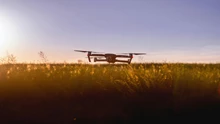
Currently, disease could only be prevented by vaccination done biannually and the affected animal can get natural recovery with the help of supportive palliative treatment
The term bio security refers to the implementation of measures that reduce risk of the introduction and spread of disease agent
Foot and Mouth disease (FMD), a virus infection remains one of the important obstacles in domestic dairy live stock rearing and management. The contagious nature of virus and disease transmission rate poses great threat to herd health and farm production. The disease mainly affect cloven footed animal; including >200 species of wild and domestic ungulates. Currently, disease could only be prevented by vaccination done biannually and the affected animal can get natural recovery with the help of supportive palliative treatment.
For FMD, mortality is seen particularly in young animals and morbidity can go up to 100% in all species of ruminant within specific locality. Also, FMD requires very low infectious dose for disease transmission and the infected animal can excrete and secrete mature virus and can able to persist in environment (Table1) Although the virus is capable of persisting in environment, it is very much sensitive to relatively small change in PH. Thus, risk of spread of disease can be reduced by adequate cleaning and disinfection of premises. The FMD virus is inactivated below pH 6.5 and above PH 9.
Humidity also assists in virus survival under environmental condition where cooler temperature favors virus integrity. Thus, it becomes imperative to observe and follow certain bio security guidelines for prevention and control of disease. Also special emphasis need to be given during the time of disease incidence and post convalescent period where personnel’s are in close proximity with the infected animals and farm; posing high risk of spread of disease.
Bio security The term bio security refers to the implementation of measures that reduce risk of the introduction and spread of disease agent. It also involves the adoption of a set of attitudes and behavior by people to reduce the risk in all activities involving animals and their product.

Principle of bio security Bio security mainly involve three important elements
-
Segregation It is one of the most effective bio security step post disease incidence, as virus cannot be transmitted unless it come into contact with fresh set of animals or equipments. Therefore, every effort should be made to use segregation wherever possible of peoples, animals’ objects that are taken to contaminated area. Segregation could be physical (e.g. wall/gates), temporal (e. g time of feeding), procedural/operational (e.g. use of appropriate footwear and aprons)
-
Cleaning Disinfectant cannot kill virus hidden beneath layers of dirty area where as many disinfectants are inactivated by organic material. Thus, attention needs to be given to clean all visible dirt (on footwear, premises) before disinfection.
-
Disinfection is important but it is only effective in presence of quality cleaning process. Additionally, the quality of disinfection improves with sufficient contact time with surface, area covered, concentration used. A number of commercial disinfection like citric acid (0.2%), FAM (30%), Virkon (1%) are effective agent FMDV. Any disinfectant which maintains pH below 6.5 or above 9 will be effective against FMDV.
Farm bio security procedures Segregation
-
Separate the affected animals immediately from apparently healthy animals
-
Do not allow the sick animals to mix with apparently healthy animals
-
Avoid sending animals for grazing at common place in presence of epidemic wave
-
Avoid common source of water for drinking purpose. Add 2% sodium bicarbonate in drinking water
-
Restrict the traffic of people in and out of farm
-
Isolate and quarantine new animals for at least 14 days before introducing to the native herd Physical barrier
-
Clear demarcation to be made for of the clean and dirty area Vehicles should be parked outside the premises and never to be driven on to the farm
-
Disposable coveralls and washable boots should be worn by the animal workers and visitors while visiting farm Cleaning/ Disinfection
-
Setting up of disinfection point: it is helpful to have standard list of items required like Plastic Mat, Bucket, Detergent, Disinfectant, scrubber, zip-lock bag, tape, scissor, latex gloves, bio security suit, shoe cover etc.
-
To prevent the spread of disease spray 4% sodium carbonate solution (400gm Na2Co3 in 10 liters of water) or Lime/Bleaching powder every day, at least once, around the farm premise and for at least 10 days
-
at main entry/exit
-
Clean and disinfect the vehicle before entry and exit, particularly the tyres and wheel arches Miscellaneous
-
Digitize the photo repository for disease incidence
-
Judicious and proper disposal of clinical items used at farm
-
Disinfection of electronic equipment (e.g. cell phones, keys etc.) taken-to-and-from farm on zip-lock bag Preventive and palliative treatment
-
Inform the nearest veterinary clinician/ unit for suspected cases
-
Veterinary officer must go for ring vaccination in unaffected animals. During vaccination veterinarian must use separate needle of each animal.
-
Apply paste of boro-glycerine (850 ml glycerin and 120 gm boric acid powder) on tongue and mouth lesions for 3-5 days. A paste of finger millet flour in honey can also be used
-
In case of severe clinical disease, analgesics and antipyretic and mild antibiotics like discrysticine, oxy tetracycline etc for 3-5 days to be used as directed by field veterinarian
-
Apply fly replant like He max or neem oil on wound in areas other than mouth and buccal cavity. If there is development of maggot in the foot lesions, turpentine oil may be applied on affected wound to remove maggots.











